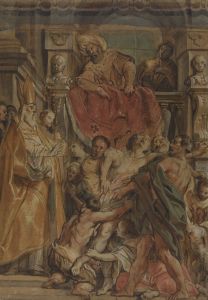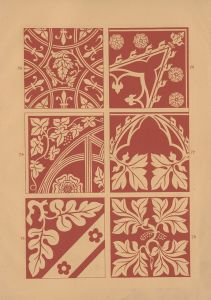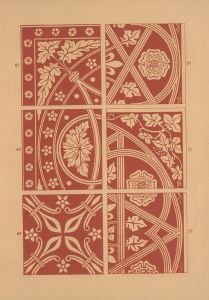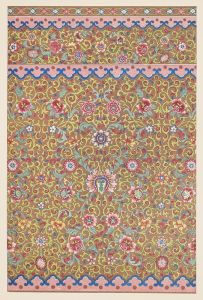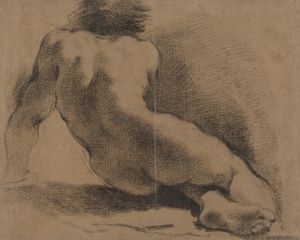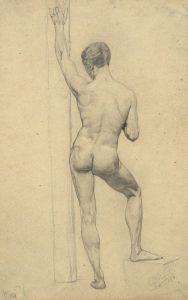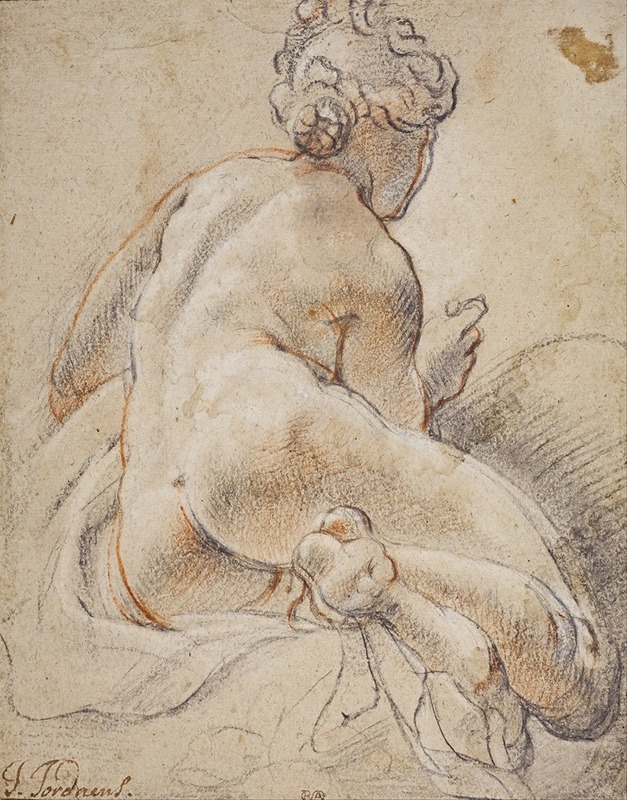
Female Nude, Seen from the Back
A hand-painted replica of Jacob Jordaens’s masterpiece Female Nude, Seen from the Back, meticulously crafted by professional artists to capture the true essence of the original. Each piece is created with museum-quality canvas and rare mineral pigments, carefully painted by experienced artists with delicate brushstrokes and rich, layered colors to perfectly recreate the texture of the original artwork. Unlike machine-printed reproductions, this hand-painted version brings the painting to life, infused with the artist’s emotions and skill in every stroke. Whether for personal collection or home decoration, it instantly elevates the artistic atmosphere of any space.
Jacob Jordaens was a prominent Flemish Baroque painter, known for his vibrant use of color and dynamic compositions. He was born on May 19, 1593, in Antwerp, where he spent most of his life and career. Jordaens was a contemporary of Peter Paul Rubens and Anthony van Dyck, and he is often associated with these artists as one of the leading figures of the Flemish Baroque movement. Although he never traveled to Italy, Jordaens was influenced by the Italian Renaissance and Baroque styles, which he adapted to his own unique approach.
"Female Nude, Seen from the Back" is one of Jordaens' works that exemplifies his skill in depicting the human form. This painting, like many of his works, showcases his ability to render the human body with a sense of realism and vitality. The subject of the painting is a female nude, viewed from behind, which allows the artist to focus on the contours and musculature of the back. The composition is both intimate and powerful, highlighting Jordaens' mastery of anatomy and his sensitivity to the nuances of light and shadow.
The painting reflects the Baroque interest in naturalism and the human figure, a theme that was prevalent in the art of the 17th century. Jordaens, like his contemporaries, was interested in capturing the beauty and complexity of the human body, and his works often explore themes of sensuality and physicality. The use of chiaroscuro, a technique that employs strong contrasts between light and dark, is evident in this painting, adding depth and dimension to the figure.
Jordaens' approach to the female nude was influenced by the artistic traditions of his time, yet he brought his own interpretation to the subject. Unlike some of his contemporaries who idealized the human form, Jordaens often depicted his subjects with a robust and earthy realism. This approach can be seen in "Female Nude, Seen from the Back," where the figure is rendered with a sense of solidity and presence.
Throughout his career, Jordaens produced a wide range of works, including religious scenes, mythological subjects, and genre paintings. While he is perhaps best known for his large-scale compositions and lively depictions of peasant life, his studies of the human form, such as "Female Nude, Seen from the Back," demonstrate his versatility and technical skill as an artist.
Jordaens' work was highly regarded during his lifetime, and he received numerous commissions from patrons across Europe. His paintings were sought after for their dynamic compositions and vibrant use of color. Today, his works are held in major museums and collections around the world, where they continue to be studied and admired for their contribution to the Baroque tradition.
In summary, "Female Nude, Seen from the Back" by Jacob Jordaens is a testament to the artist's ability to capture the human form with realism and sensitivity. The painting reflects the Baroque fascination with the natural world and the human body, and it highlights Jordaens' skill in rendering light, shadow, and anatomy. As a prominent figure in the Flemish Baroque movement, Jordaens' work remains an important part of art history, celebrated for its vitality and expressive power.






